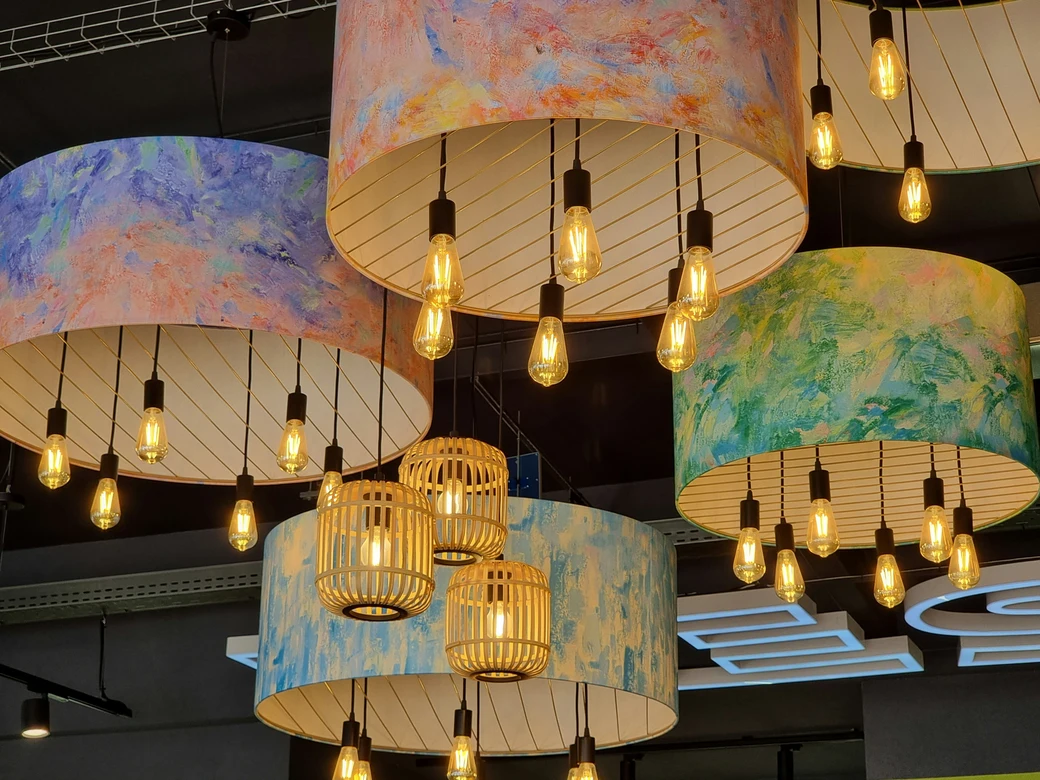Your living room’s interior might soon design itself.
In 2025, AI interior design planners have evolved from simple suggestion tools to autonomous home design systems. They don’t just show what your house could look like — they rearrange furniture, adjust lighting, and even recommend materials in real time based on your behavior, mood, and local climate.
Imagine walking in after work and your living room subtly shifts: the lighting warms, the sofa repositions for conversation, and the sound system cues a calm playlist — all without a command. This isn’t science fiction; it’s context-aware design, the next step in AI’s evolution toward living environments that sense, predict, and adapt.

What Changed: From Static Interior Layouts to Living Design
AI’s entry into home design has been gradual — from algorithmic color suggestions in 2019 to full 3D layout intelligence in 2025.
Today’s AI interior planners integrate four technological layers:
- Spatial AI — to map and measure rooms in real time.
- Behavioral analysis — to learn user routines.
- Generative design — to test layout variations digitally.
- Automation systems — to execute changes via connected devices.
This convergence means your home doesn’t just react to commands; it thinks with you.
Brands like IKEA, Google, and Amazon are leading the transition:
- IKEA’s AI Layout Studio uses generative modeling to redesign entire rooms based on mood (“calm,” “productive,” “family focus”).
- Google Home Ambient Mode 3.0 creates environment presets — from lighting to temperature — matched to biometric and contextual cues.
- Amazon Astro Vision integrates AI furniture mapping to track space utilization and suggest organization improvements.
AI design is no longer a service; it’s an ecosystem.
Why It Matters for Homeowners and Designers
1. Personalized Functionality
Every family has unique habits — meal times, lighting preferences, work hours. AI models learn these micro-patterns to optimize design decisions that actually fit life.
2. Sustainability and Efficiency
AI systems now calculate sunlight exposure and airflow to reduce energy consumption. Smart layouts can lower electricity costs by 15–20% annually.
3. Democratization of Design
Professional design once required expensive software and consultants. Now, free AI platforms (like RoomGPT and Planner5D AI) allow anyone to prototype dream spaces in minutes.
4. Real-Time Adaptation
Unlike fixed blueprints, AI environments evolve. Homes can “grow” with users — adjusting to a new baby, aging parents, or remote work.
5. Accessibility
AI design can enhance accessibility for people with mobility challenges, using real-time movement tracking to reorganize furniture or guide navigation paths.

Interior Tools & Technologies Powering the Movement
1. Generative Layout Engines
Systems like OpenAI’s Spatial Designer and Midjourney V8 Architectural Model generate layout variations instantly, analyzing ergonomics, daylight patterns, and user movement data.
2. Vision AI & LiDAR Mapping
Smartphones and IoT cameras capture 3D models of spaces. AI interprets the data, calculating angles, depth, and flow to recommend optimal arrangements.
3. Smart Furniture with Embedded Intelligence
Companies like Sobro, Ori Living, and IKEA now ship furniture with AI chips and actuators. Desks adjust automatically when they detect posture fatigue; beds modify firmness during sleep.
4. Context-Aware Lighting Systems
AI lighting platforms like Nanoleaf Sense+ and Philips Hue AI Sync use machine learning to alter color temperature based on circadian rhythm and mood recognition.
5. Predictive Automation Platforms
AI integrates across HVAC, sound, and lighting to predict needs before they’re voiced — e.g., pre-cooling rooms before occupancy or lowering blinds based on sunlight intensity.
The Rise of Context-Aware Homes For Interior
The next generation of AI homes uses environmental intelligence.
Instead of focusing on automation (“turn on lights”), AI shifts to context awareness — understanding why you need light. The difference is subtle but revolutionary.
- Old Smart Home: “Hey Google, dim the lights.”
- New AI Home: Lights dim automatically when your smartwatch shows elevated stress levels.
By blending biometrics, geolocation, and ambient sensors, AI creates living spaces that feel emotionally aligned with their occupants.
Ethical & Creative Implications For Interior
While the idea of self-decorating homes excites many, it introduces philosophical and ethical debates.
- Privacy: Home mapping and behavioral data are deeply personal. Transparency on data storage and anonymization is crucial.
- Over-automation: Excessive predictive behavior can feel intrusive. A system that changes layouts without consent could disorient users.
- Digital Dependency: The more AI manages home life, the less spontaneous personalization occurs. Designers must preserve the human touch.
- Bias in Aesthetic Algorithms: AI trained on Western design preferences can inadvertently homogenize global aesthetics — risking cultural erasure.
Responsible AI design must combine automation with autonomy — systems that empower, not control.
Step-by-Step: How to Build a Smarter Living Space
| Step | Action | Purpose |
|---|---|---|
| 1 | Start with AI layout scanning (via RoomGPT or IKEA AI Studio) | Build a precise digital twin of your home |
| 2 | Input daily routines & preferences | Helps AI create meaningful context |
| 3 | Let AI propose 2–3 layout concepts | Compare flow, light, and energy metrics |
| 4 | Integrate smart furniture & lighting | Allow automation to physically adapt your space |
| 5 | Fine-tune with voice or app controls | Adjust boundaries of automation |
| 6 | Track energy, comfort, and time metrics | Evaluate AI efficiency improvements |
| 7 | Continue to update and retrain the system | Let your home learn continuously |
Soon, personalization will no longer require apps — it will be ambient, predictive, and emotionally aware.
Real-World Examples
IKEA Layout Studio (2025)
Uses emotion-based tagging — users select moods instead of styles. The AI then generates color schemes, layouts, and textures to match “calm,” “creative,” or “focus.”
Google Ambient Mode 3.0
Integrates with Nest, Pixel devices, and Fitbit sensors to dynamically orchestrate lighting and temperature for circadian wellness.
OpenHome OS (Japan)
The first open-source platform for adaptive architecture — integrating AI, robotics, and sustainability sensors to reconfigure apartments automatically.
Ori Systems MicroLoft
Compact apartments that morph — walls slide, furniture retracts, and lighting repositions as activities change.
These examples point toward one truth: interior design is no longer static; it’s algorithmic.
The Future of AI-Driven Living
By 2026, AI will expand beyond aesthetics into architectural logic. Homes will analyze humidity, acoustic resonance, and airflow to remodel interiors for better health.
We’re approaching the era of regenerative homes — spaces that self-heal, optimize, and evolve. Future versions of AI planners will merge with sustainable building materials, making homes that are not just smart, but symbiotic.
Imagine a wall that repaints itself to absorb less heat, or flooring that changes hardness for athletic vs. rest zones. It’s not fantasy — it’s the next iteration of design intelligence.

FAQs & Key Takeaways
Q: Can AI replace human interior designers?
No — it enhances creativity. AI handles technical and spatial calculations; humans provide intuition, storytelling, and emotional resonance.
Q: How private are AI home systems?
Most modern systems encrypt user data locally. Always choose devices with clear privacy policies.
Q: Are AI-driven homes expensive?
Initially yes, but modular AI systems reduce long-term maintenance and energy costs, often paying for themselves within two years.
Q: Can I control what AI changes automatically?
Absolutely. Context-aware systems always offer adjustable automation thresholds.
Q: What’s next for home AI?
Predictive architecture — AI that not only arranges furniture but predicts renovation needs before they arise.
Key takeaway: AI interior design planners are redefining living spaces — transforming houses into evolving ecosystems that learn, adapt, and design themselves around us.
At Designs24hr, we believe every innovation in AI and design brings us closer to smarter, more meaningful living. Your home, your tools, and your creativity are all part of this transformation — and your experience matters.
Share your thoughts:
Have you tried an AI interior design tool or a smart home system that surprised you? What would your dream adaptive space look like?
Tell us in the comments — your stories inspire our next articles.
#Designs24hr #AIDesign #LivingSpaces #SmartHome #AIInteriorDesign #HomeAutomation #AIArchitecture #DesignTrends #SmartLiving
Want more ideas like this?
Explore the Living Spaces category on Designs24hr and discover how AI is transforming interiors, architecture, and everyday comfort.







